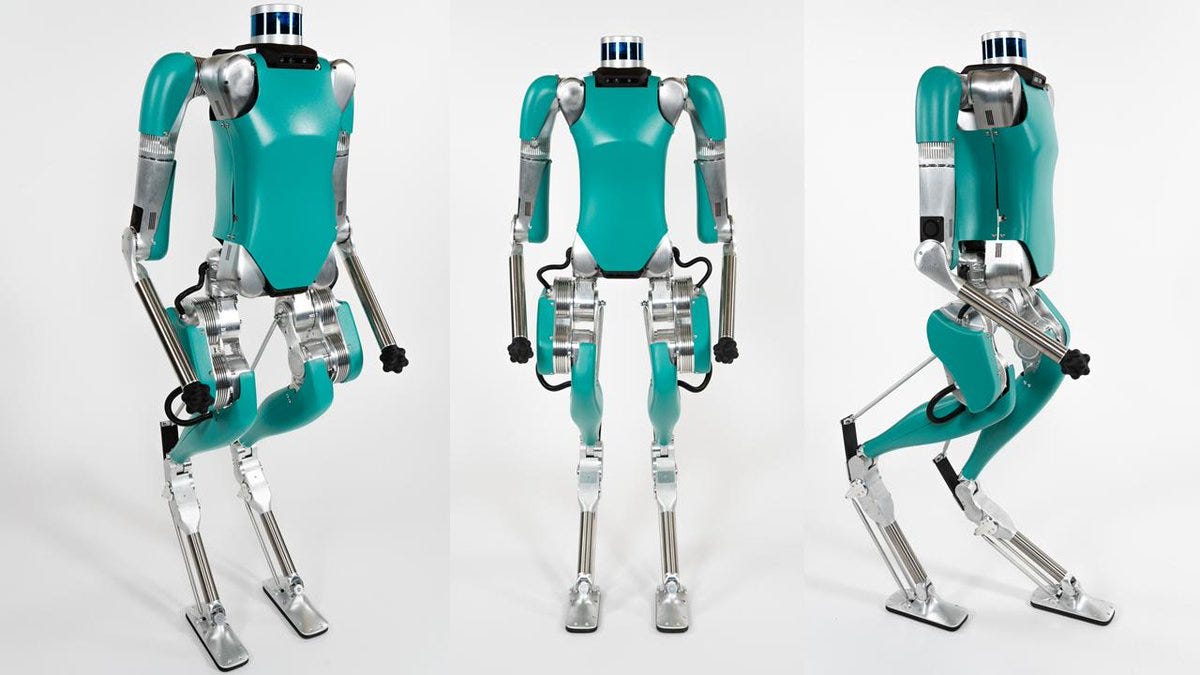[ad_1]

Agility Robotics
One of my favorite robots of the last few years is named Cassie. Little more than a pair of bipedal robotic legs, the robot was designed as a robust R&D tool for ground mobility applications. It’s a cool robot, and it’s a great illustration of a company developing baseline technology readymade for useful iteration.
That approach has now netted Agility Robotics, maker of Cassie and, more recently, of commercial robots designed to work alongside people in logistics and warehouse environments, an impressive $150M Series B, which it will use to implement human-robot collaboration in logistics warehouses. The humanoid robots are capable of carrying out a number of potential warehouse tasks previously done by humans and can be deployed flexibly in various environments.
“Unprecedented consumer and corporate demand have created an extraordinary need for robots to support people in the workplace,” explained Damion Shelton, CEO of Agility Robotics. “With this investment, Agility can ramp up the delivery of robots to fill roles where there’s an unmet need.”
Very notably, this round had participation from Amazon as part of the company’s recently announced $1B Industrial Innovation Fund. Agility is one of the first five recipients of the fund, a milestone investment for a 7-year old company out of rural Oregon started by two Robotics Ph.Ds from Carnegie Mellon.
“The purpose of the Amazon Industrial Innovation Fund is to support emerging technologies through direct investments, designed to spur invention and solve for the world’s toughest problems across customer fulfillment operations, logistics, and supply chain solutions,” said Katherine Chen, Head of Amazon Industrial Innovation Fund. “Agility’s approach to designing robotics for a blended workforce is truly unique and can have a significant ripple effect for a wide range of industries, and we hope others follow suit to accelerate innovation in this way.”
Agility has evolved quickly to focus on true commercial robots that work collaboratively and side-by-side with people in a familiar and non-threatening way. Their robots can easily walk, climb stairs, navigate unstructured environments, carry packages, stack goods, and work indoors or out, all of which are skills that were elusive within robotics development even a short time ago. The company’s robots are now deployed in the factories and warehouses of top U.S. logistics companies, as well as Ford Motor Co. and some of the country’s most elite research institutions, including Ohio and Michigan.
The capital raise underscores the continued reliance on automation to drive efficiency, even as the economy grows more turbulent. Faced with a tight labor market and supply chain woes, logistics operations are increasingly relying on automation to fill key gaps, shifting reliance slowly away from human workers.
Agility’s most advanced robot will be deployed at customers’ sites later this year. The Series B was led by led by DCVC and Playground Global.
[ad_2]
Source link



